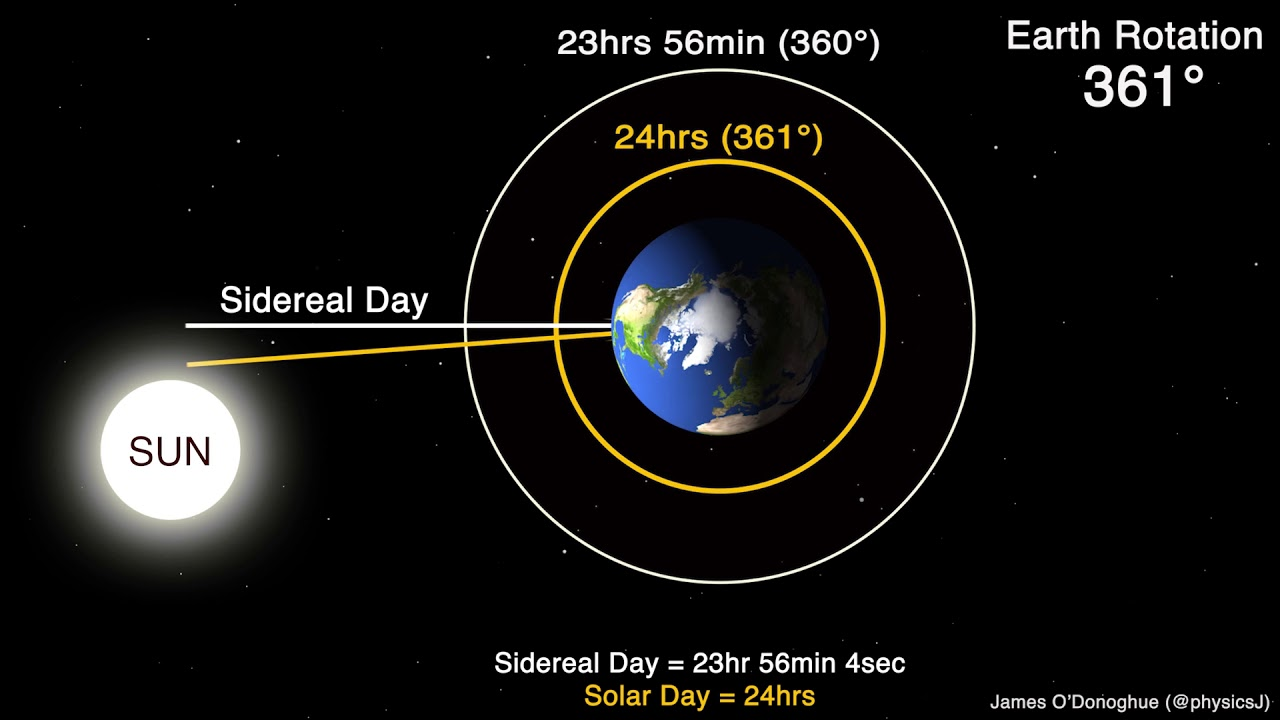Time
Definitions:
- Solar time: noon is defined as when the sun crossed the meridian.
- Mean solar time: allows each day to have the same length.
- In 1884, London decreed the Mean Solar Time would become Greenwich Mean Time (GMT) ... which then became UTC.
- ... which was then modified to become independent from GMT, now known as UT, as the time when stars cross the meridian (transit).
- UT Has versions - UT1 is most popular, UT0 or UT2 are also used (rarely).
- Standard stars used to determine UT.
- Transit telescope: slews along the meridian (north / south) to tell when a star moves across - does not slew east-west.
- Julian date: count of days since noon on January 1, 4713 BC.
- Created in 1582 by Joseph Scaliger to help make history line up.
- Synchronized with UT (i.e. J2000 is Julian 2000 w.r.t UT)
- MJD is Modified Julian Date - first 2,400,000.5 days subtracted to make the number shorter.
- i.e. measured since 1857 CE rather than 4713 BCE.
Days:
Sidereal (or stellar days) are measured with respect to the stars. Solar days are measured with respect to the sun - slightly longer because the Earth moves approximately 1 degree around it's orbit.

LST and Hour Angle
Local Sidereal Time (LST) and Hour Angle are the way we navigate using equatorial coordinates.